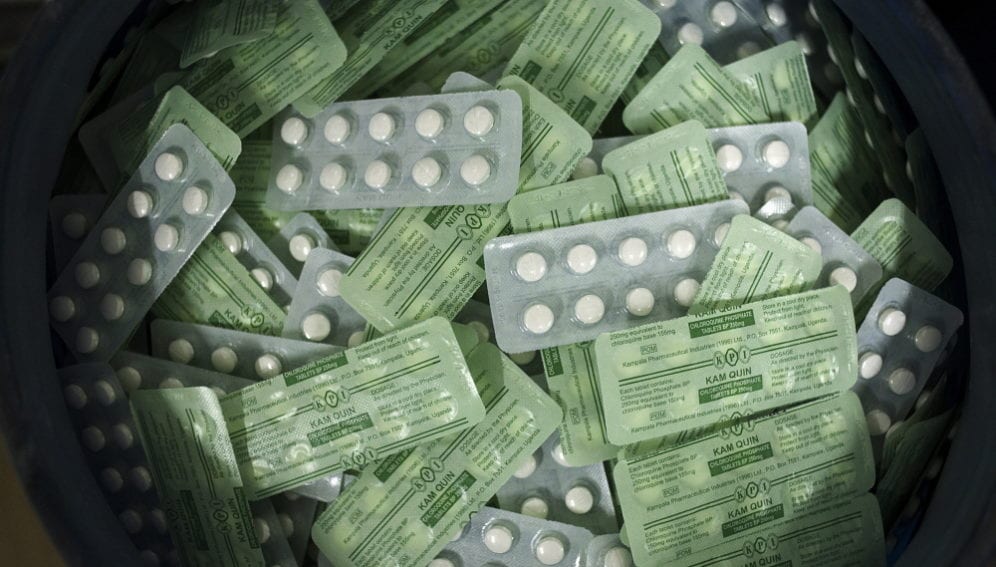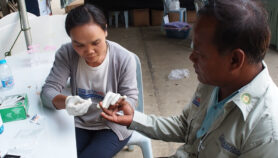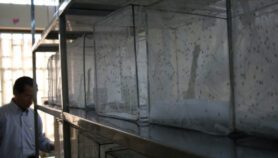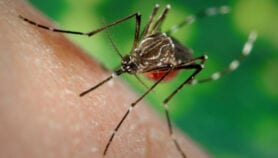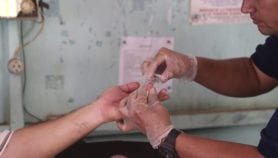By: Claudia Caruana
Send to a friend
The details you provide on this page will not be used to send unsolicited email, and will not be sold to a 3rd party. See privacy policy.
[NEW YORK] A team of researchers from the National University of Singapore (NUS) believe they have uncovered the secret behind the potent parasite-killing ability of artemisinin, a drug considered to be the last line of defence against malaria.
Artemisinin, primarily used for the treatment of Plasmodium (P.) falciparum malaria species, is also increasingly used to treat P. vivax.
“CThe WHO has called artemisinin combination therapies as the first-line therapy for P. falciparum malaria worldwide.”
By Qingsong Lin, NUS assistant professor
In a study published in Nature Communications (22 December), the researchers clarified a long-standing debate regarding the source of iron required for artemisinin activation.
“We showed that the main activator of artemisinin is haem, a specific iron-containing compound, which is either biosynthesised by the parasite at its early developmental ring stage or derived from haemoglobin digestion in the later stages,” says Qingsong Lin, co-author of the study and an assistant professor in the biological sciences department of NUS.
Although artemisinin has been in use for a long time, how it works has not been fully understood, he notes. “Previously, only two targets of artemisinin were identified, and now, we have identified 124 protein targets of artemisinin in P. falciparum, which is the most pathogenic malaria parasite to infect humans.”
“Many of the newly identified protein targets are involved in essential biological processes in the parasite, explaining its potent killing effect,” he adds.
As the “last line of defence” for malaria, this means that if artemisinin loses its effectiveness due to resistance, “then we are in deep trouble, as no other effective drugs are available against malaria”, Lin acknowledges.
He stresses, however, that this does not mean that it is the last choice for malaria treatment: “The WHO has called artemisinin combination therapies as the first-line therapy for P. falciparum malaria worldwide.”
Lin believes their finding not only provides a more complete picture of how artemisinin and its derivatives work, but also suggests new ways of using the drug. “For instance, to improve drug activation at different stages of the infection, we can explore enhancing the level of haem biosynthesis in the parasite.”
Kevin Tan, a professor at the department of microbiology and immunology at the NUS Yong Loo Lin School of Medicine, is concerned that artemisinin resistance on malaria parasites is becoming an emerging issue, particularly in South-East Asia. The study, he believes, “could potentially contribute to the design of better drugs and treatment strategies against malaria”.
The researchers are collaborating with the NUS department of chemical and biomolecular engineering to develop novel artemisinin analogues with more specific targeting properties.
This piece was produced by SciDev.Net’s South-East Asia & Pacific desk.
References
Jigang Wang and others Haem-activated promiscuous targeting of artemisinin in Plasmodium falciparum (Nature Communications, 22 December 2015)


